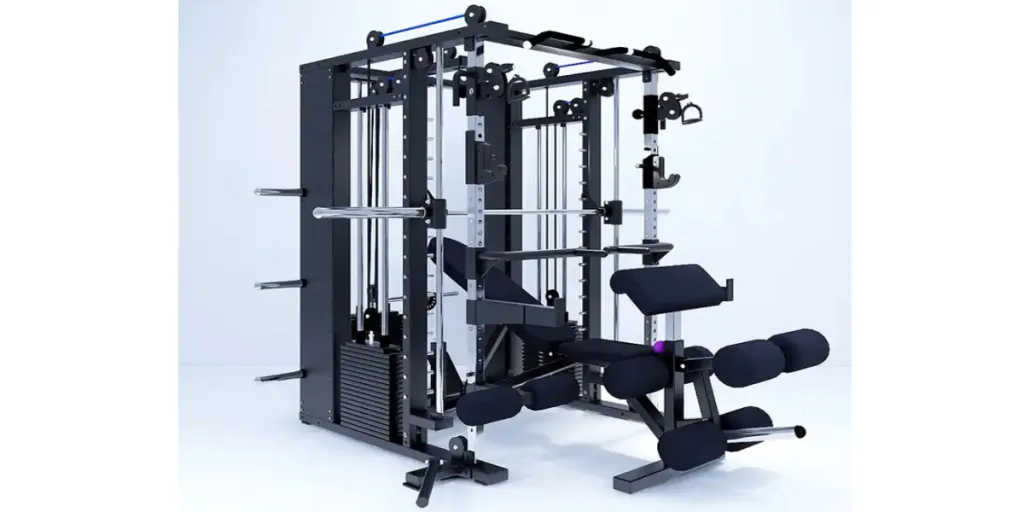Smith machines are a type of weight training equipment that feature a steel frame that holds a barbell that moves along two vertical paths. The guided barbell ensures the user achieves the correct action during squats, shoulder presses, and bench press exercises. This added security makes them the perfect tool for solo workouts, while its versatility means that it can be used for various strength training exercises.
Here, we’ll take a look at the key factors to consider when sourcing Smith machines for your business.
Table of Contents
Smith machines market share
Types of Smith machines
Things to consider when buying Smith machines
Summary
Smith machines market share
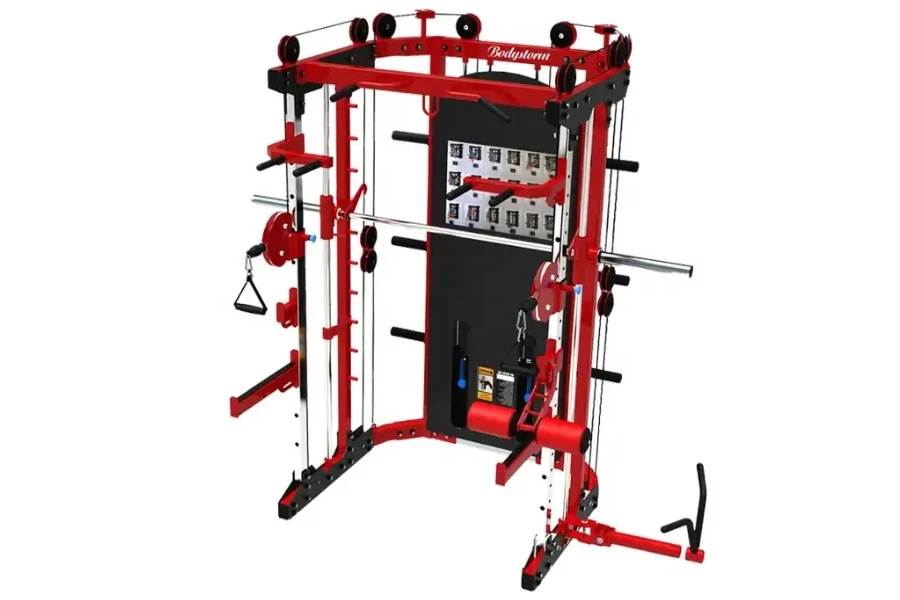
According to Data Intelo, the market for Smith machines will grow at a 5.5% CAGR 5.5% between 2022 and 2030. This surge in demand is propelled by the increased need for Smith’s machines in gymnasiums, health clubs, and even home gyms across the globe. The regions with the highest demand for Smith machines include North America, Europe, and Asia. This demand is likely to continue to grow as technology and designs improve.
Types of Smith machines
1. Traditional Smith machines
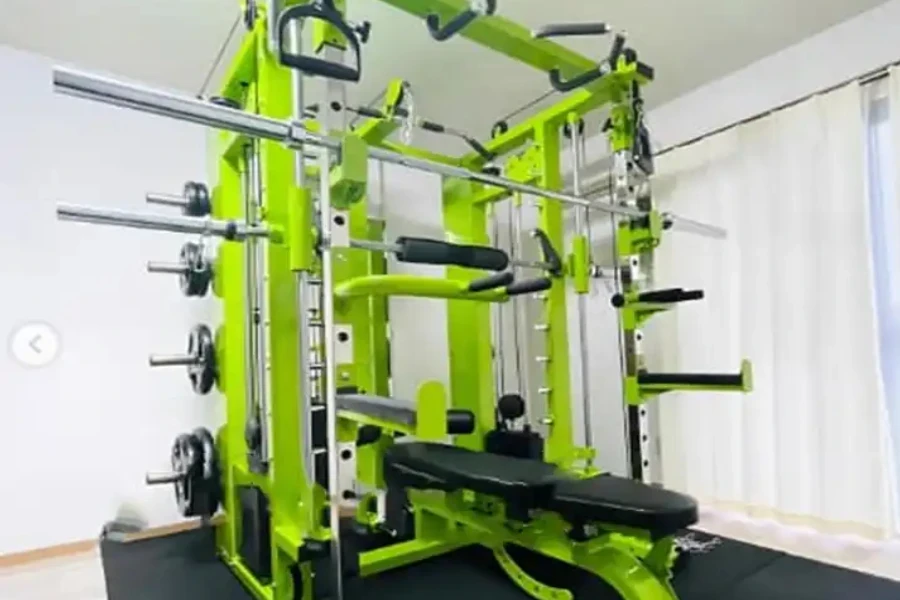
Traditional Smith machines are usually made of steel and measure about 7 by 4 feet and weigh approximately 600 pounds, making them sturdy enough for different types of resistance workouts. They normally cost between US $1,000 to US $3,000, depending on the brand and functionality.
Their simple design comprises a guided barbell fitted with fixed vertical tracks that allows for safe and secure workouts, including squats and bench presses.
2. Counterbalanced Smith machines
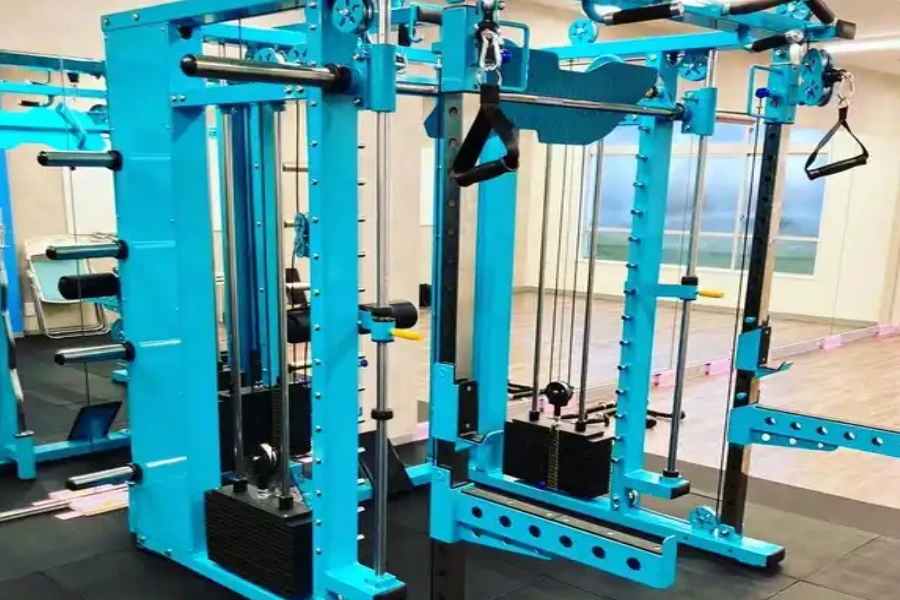
More modern Smith machines feature counterbalancing technology that nullifies the effect of the barbell’s weight. This design aims to minimize the user’s resistance, making it perfect for people just starting to lift or rehabilitating after injury.
At upwards of 700 pounds, counterbalanced Smith machines tend to weigh more than traditional versions but feature a smoother lift. They often cost between US $1,500 and US $4,000.
3. Linear-bearing Smith machines
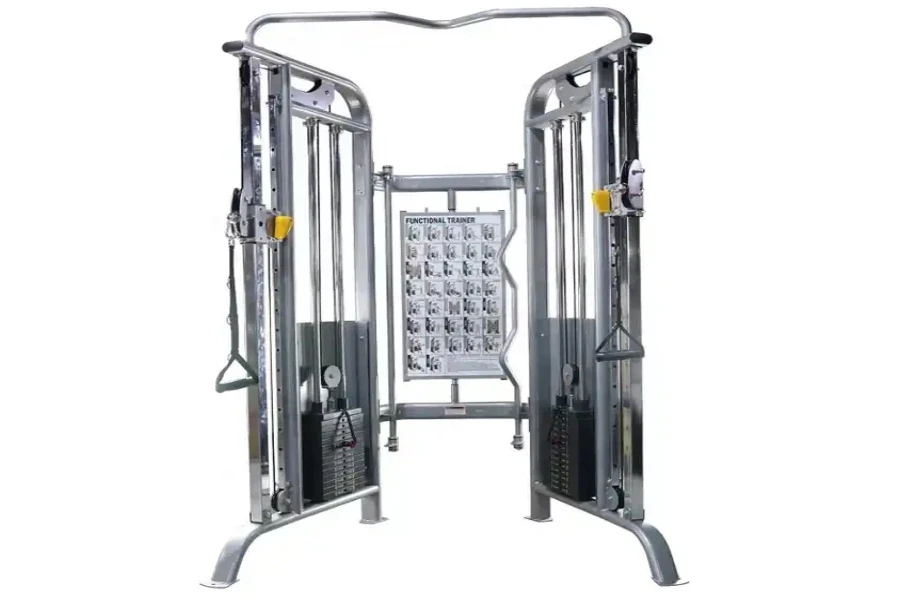
Because of their high-tech sliding bearings, which offer remarkable sliding action, linear-bearing Smith machines are even heavier than the previous two options, often a ton. These machines are priced between US $2,000 and US $5,000 and provide more comfort during workout sessions compared to other models.
4. Cable Smith machines
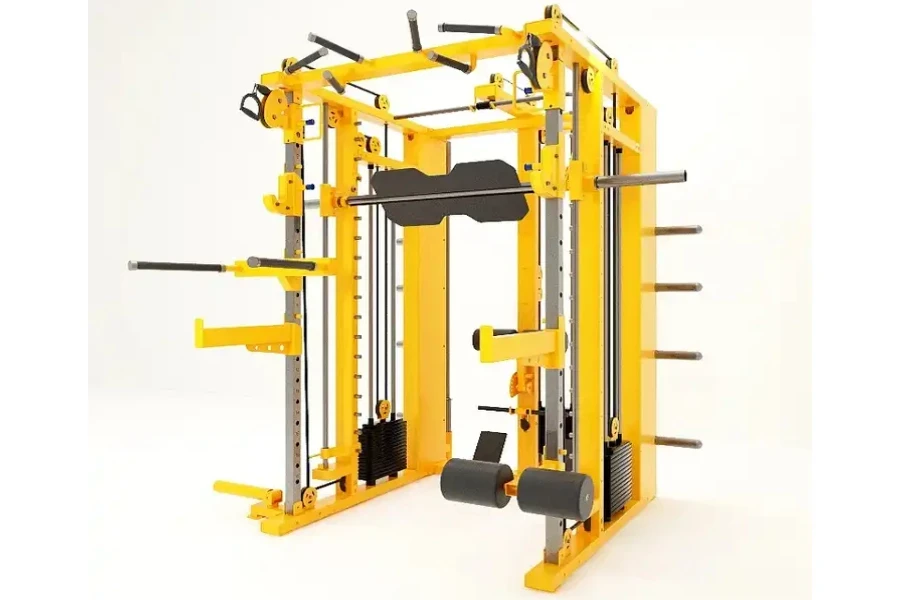
A cable Smith machine departs from the standard bar and track mechanism to provide load. These units are similar in size to the others and cost between US $1,500 to US $4,000. Designed using quality cables, they allow for different exercises, including functional movements and cable cross-overs.
Things to consider when buying Smith machines
1. Cost
The cost of a Smith machine varies depending on the brand, features, and general build quality. It may be enticing to opt for cheap brands, but a balance between affordability and longevity matters most. Although choosing an affordable machine from a good manufacturer may be cheaper than hiring a trainer, the investment for a home gym or a professional area is worth the price in the long term. Depending on the model, Smith machines may cost anywhere between US $500 to US $5,000 on average.
2. Weight capacity
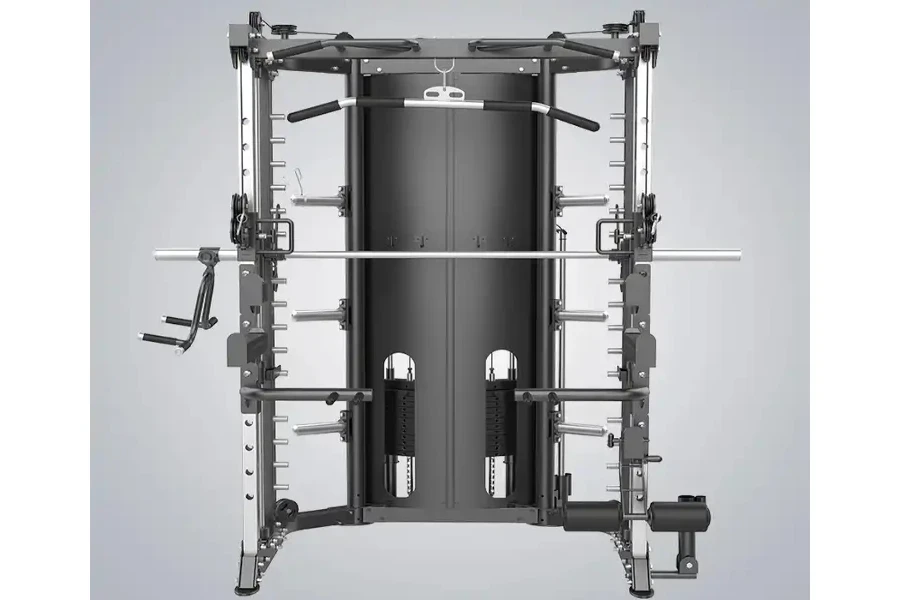
Knowing the weight capacity of a Smith machine is a must for safe workouts. The weight capacity tells you the maximum load the machine can take, including the barbell. Opting for machines with weight capacities means that you’re unlikely to outperform the machine. Smith machines usually carry weights that range between 300 to 1,000 pounds.
3. Frame construction
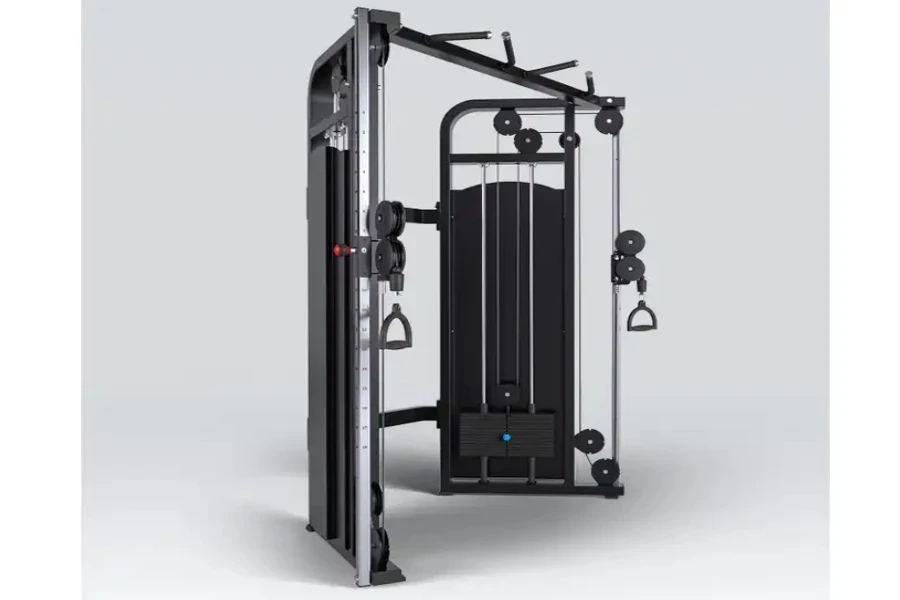
Frame construction can affect a Smith machine’s stability and the longevity of the equipment. High-quality materials, such as heavy-duty steel, better ensure a sound frame that can withstand frequent use. Strong and sturdy welded frames are much better than other bolted models because they are less likely to collapse under stress or during intensive exercises. Additional safety measures include powder-coated frames to prevent rusting.
4. Barbell type
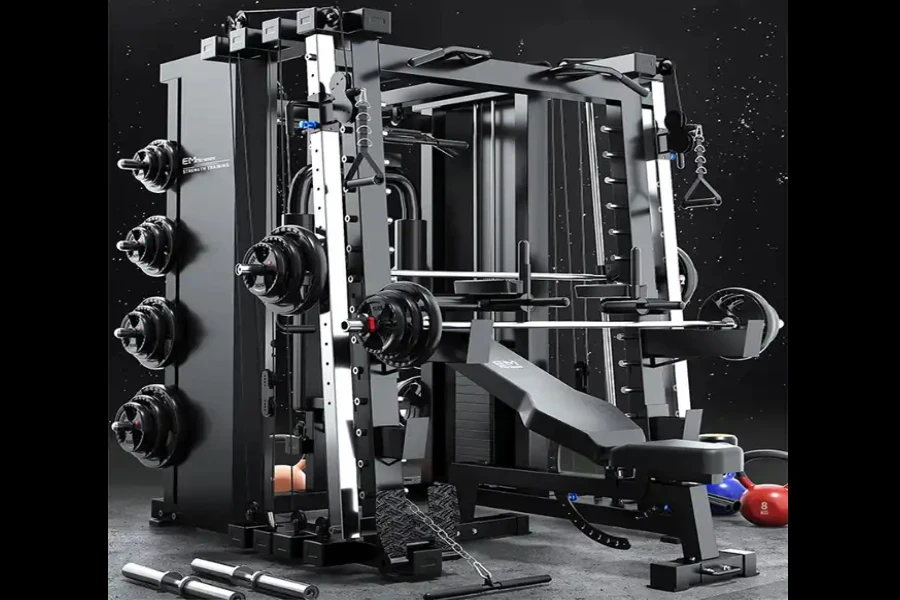
Fixed barbells are common in Smith machines, providing a sturdy and directed movement for different training programs. Some Smith machines use heavy-duty Olympic-sized barbells, which work well with standard weight plates to make training more like traditional weight training. Choosing the right barbell type is key to achieving successful workouts that suit the specific needs of the customer.
5. Safety features
Smith machines must feature numerous features to be considered safe, something that is especially important for those contemplating working out on their own. Machines with adjustable safety gates or spotter arms are crucial for providing a safety cushion by preventing the barbell from sinking too low due to fatigue or a missed step when exercising. Some advanced models will provide better comfort and safety via various safety features or locks.
6. Size and dimensions
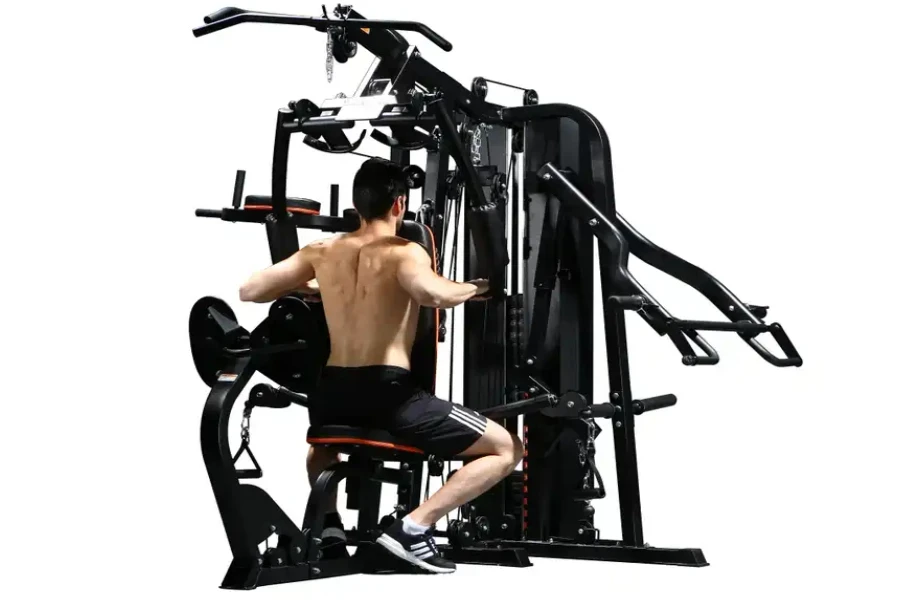
Smith machines with space-saving designs make all the difference when they’re needed for home gyms. Meanwhile, commercial settings will often be able to fit larger and more elaborate models. Choosing the right sized Smith machine will make all the difference to achieving an effective sports routine. Therefore, you must always confirm their measurements and that of the available space. Keep in mind that the average size of a Smith machine is 7 by 4 feet.
Summary
Choosing the appropriate Smith machine requires careful attention to price, weight capacity, frame build, and security measures. Choosing the best Smith machine for workouts is easier once you understand the basics about traditional, counterbalanced, linear-bearing, and cable varieties. No matter which type of Smith machine you’re looking for, you’re bound to find the right one for you among the thousands of options on Alibaba.com.
